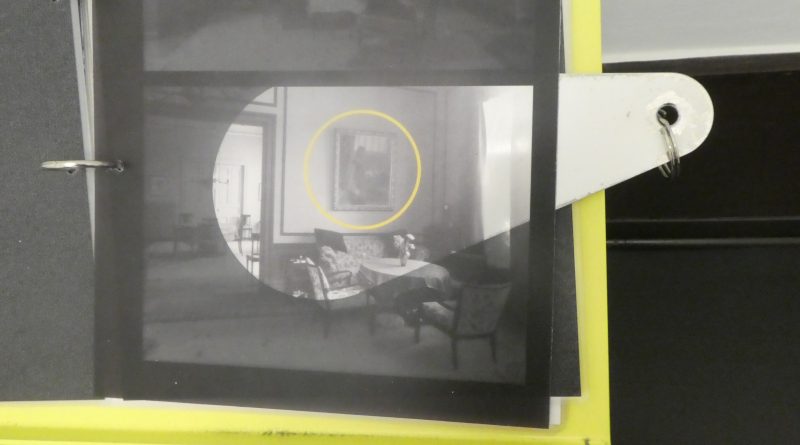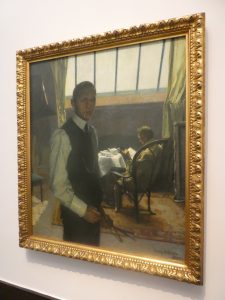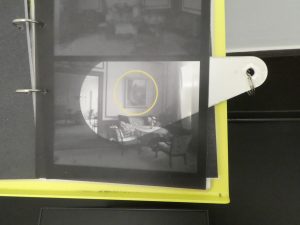Hamburg – Hamburger Kunsthalle (Self-Portrait by Franz Nölken)
Visiting art galleries in Germany is interesting to me as they have to deal with the challenges of the Second World War, but often in a different way to those in Poland and other occupied territories. I’ve visited tens of galleries and museums in Poland, most of which were raided by the Nazis and their collections either pinched by corrupt officials and sold for profit, destroyed or shipped back to the Fatherland. Even today, there are tens of thousands of paintings, artworks and collectables which haven’t been found or which are residing in collections where they probably shouldn’t be. Poland isn’t alone, this happened throughout Europe and the level of destruction was enormous, but over 500,000 Polish artworks were looted and many are still in Germany.
In Germany, this all presented a different problem, which was that artworks were bring procured cheaply or just given to galleries. Sometimes it’s the case that artworks were forcibly taken from Jewish families, or brought back from occupied territories, other times it’s less clear cut, Jewish families selling property as they wanted to flee Germany. But very rarely were artworks willingly sold by anyone at this time, it became a necessity for many families.
This was a huge problem for curators at German museums, they had seen some of their collections raided as the Nazis considered it ‘degenerate art’, but it was clear they didn’t particularly want their artworks destroyed. So, rather than see them burnt as happened on some occasions, other galleries such as the Basel Museum in Switzerland tried to buy artworks up. Much else was sold at auction, some legitimate sales from galleries who were told to dispose of items, other times it was that of families forced to sell their belongings.
So, this left museums and galleries such as the Hamburger Kunsthalle in a dilemma, as they saw paintings and artworks arriving into their building. I’m sure at the time there wasn’t much that could be done, but as the decades have gone by, the gallery has wanted to do the right thing.
This is the self-portrait painted by Franz Nölken, a German artist who was killed just before the end of the First World War. The artwork was painted in 1904 and it was owned by a Jewish family named von der Porten. They decided to flee to Belgium in 1938 and they tried to sell this painting to the Kunsthalle, who rejected it. However, in 1939, the gallery acquired it from a private dealer in exchange for another artwork by the same artist that they had in their collections. It’s not known how much the art dealer paid for it, but it was likely only a fraction of its worth at the time.
This is a photo of the artwork when it was owned by the von der Porten family, who were able to flee Hamburg. Sadly, Frieda von der Porten and Dr. Ernst von der Porten both killed themselves in 1940 when the Nazi hatred they thought they had escaped from engulfed them once again.
With both of the owners dead, this artwork remained in the collections of the gallery. But it has recently decided to pro-actively find ancestors of these artworks, as part of the country’s “fair and just settlement”. With this artwork, the gallery has been unable to find any descendants, although its work continues.



